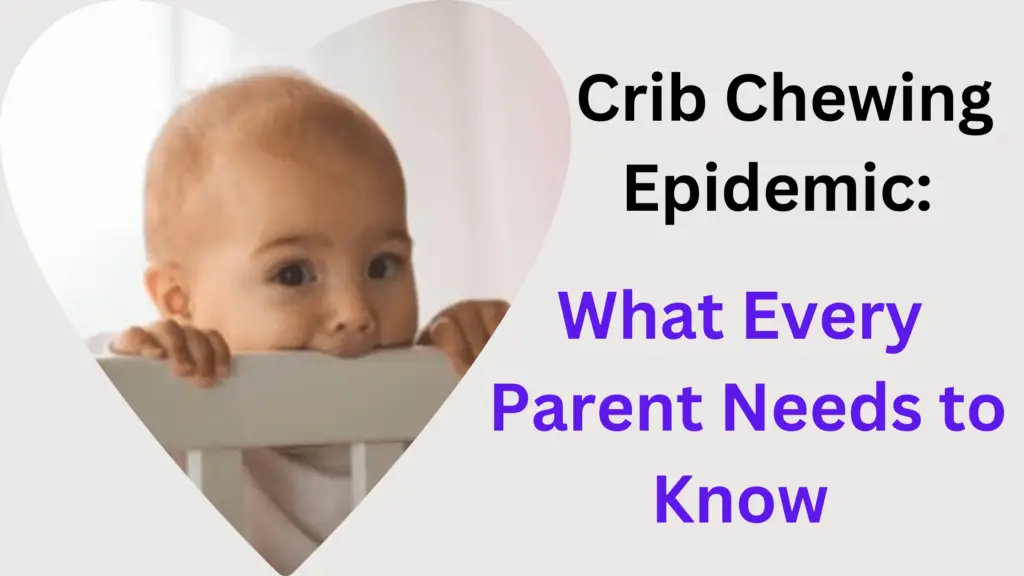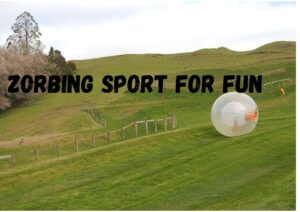As a seasoned parent, I vividly recall the countless moments of wonder and surprise that came with raising my own bundle of joy. One curious behavior that often baffles parents is when their baby starts chewing on the crib. Many parents have witnessed their little ones gnawing on the wooden rails, leaving them pondering over the whys and hows of this peculiar behavior. They get to wonder: is a baby chewing on crib a normal behavior?
Is it Normal for Babies to Chew on Their Crib?
As a parent, especially new one, you’re likely to encounter various behaviors that might seem puzzling at first. One such behavior is your baby’s penchant for chewing on their crib. Before you become too concerned, let’s explore the normalcy of this behavior:
Teething Phase and Exploratory Behavior
Babies are incredible little explorers. They use all their senses, including taste and touch, to understand the world around them. Chewing is a natural reflex that often emerges during the teething phase, which typically occurs between 4 to 7 months of age. As your baby’s teeth start to emerge, their gums might feel sore and tender. Chewing on objects provides counter pressure that offers relief from the discomfort they’re experiencing. This instinctual act is a way for them to explore different sensations and textures, much like their other exploratory activities.
Sensory Stimulation
Babies are born with an insatiable curiosity, and one of their most direct tools for exploration is their mouth. Chewing on the crib rails provides babies with a plethora of sensory input that contributes to their developmental understanding of the world. The diverse textures and shapes of the crib, from the smooth wood to the slight ridges and corners, offer a rich variety of tactile experiences. As babies gnaw on the crib, their mouths and gums receive a symphony of sensations that help them build a cognitive map of their surroundings. This oral exploration isn’t solely a means of self-soothing or teething relief; it’s a way for babies to actively engage with their environment, stimulating their senses as they unravel the mysteries of their crib’s composition.
Boredom
Babies are naturally inquisitive and thrive on engaging stimuli. When left in their cribs for extended periods without adequate interaction or entertainment, they may resort to chewing on the crib as a means of self-generated amusement. This behavior is akin to a child reaching for toys when seeking engagement, but in the absence of toys, the crib itself becomes the focus of exploration. Boredom-induced crib chewing is a signal that your baby is yearning for interaction, sensory input, and mental engagement. By providing age-appropriate toys, colorful mobiles, or gentle music, you can redirect your baby’s attention from the crib and offer them a more enriching experience within their environment.
Anxiety or Stress
Just like adults have coping mechanisms to deal with anxiety or stress, babies also find ways to comfort themselves during moments of emotional turbulence. Chewing on the crib rails can serve as a self-soothing mechanism for babies facing anxiety or stress. The rhythmic act of gnawing provides a form of distraction, offering a familiar and comforting action that helps ease their emotional discomfort. As babies navigate the complexities of their new world, they may encounter situations that provoke anxiety or stress, such as separation from caregivers or unfamiliar surroundings. Chewing on the crib becomes a means of seeking solace, much like how thumb-sucking can provide comfort to some infants.
Variation in Behavior
It’s important to remember that not all babies exhibit the same behaviors. While some babies may show a strong inclination to chew on their cribs, others might not engage in this behavior at all. Just as every baby reaches milestones at their own pace, their exploration methods can also vary.
Read About: What to Do If Baby is Too Big for Bassinet but Not Ready for Crib
Understanding Why Babies Chew on Wood and Furniture
To comprehend why babies chew on their cribs and other wooden objects, it’s essential to consider their developmental stages and needs:
Oral Exploration and Sensory Development
Babies undergo a fascinating phase of oral exploration. The mouth serves as a primary sensory organ through which they learn about various objects. Chewing on different textures—such as the crib’s wooden rails—provides them with valuable information about the world. This phase is closely tied to their cognitive and sensory development, as it helps them build a mental map of their environment.
Teething Discomfort
Teething is a natural process that introduces your baby to a world of new sensations. As those tiny teeth push through the gums, it can cause discomfort and pain. Chewing on objects, particularly those with different textures, can help alleviate some of that discomfort. The gentle pressure provides relief and a distraction from the unpleasant sensation of teething.
How to Get Your Baby to Stop Chewing the Crib
Baby chewing on crib is a normal behavior which is backed by various reasons. It is common for babies to chew on their cribs, especially when they are teething. The primary reason for this is that teething can be uncomfortable and painful, and chewing helps to relieve the pain. Chewing also helps to massage the gums and loosen the teeth.
While crib chewing is a normal behavior, there are strategies you can employ to manage it effectively:
Provide Appropriate Teething Toys
To satisfy your baby’s urge to chew, offer a selection of safe and BPA-free teething toys. These toys are designed to provide comfort to their tender gums while redirecting their chewing behavior away from the crib. Opt for toys with various textures to keep them engaged and interested.

Number 1 Recommended Teething Toy: Frida Baby Not-Too-Cold-to-Hold BPA-Free Silicone Teether
Alternative Recommended Teething Toy: Smily Mia Penguin Buddy Never Drop Silicone Baby Teether
Gum Massagers and Chilled Teething Toys
Silicone gum massagers or teething toys that can be chilled in the refrigerator can be invaluable tools. The gentle massaging action provides relief to sore gums, while the cold temperature numbs the area and offers additional comfort. However, avoid using frozen items, as they might be too cold and uncomfortable for your baby’s sensitive gums.
Apply Safe Deterrents
Consider using crib rail covers made from safe materials to discourage crib chewing. These covers not only protect the crib from the baby’s exploratory tendencies but also add a layer of padding that can be soothing for their gums. Ensure that any deterrence method you use is non-toxic and free from choking hazards.
Offer Distractions
Babies are easily captivated by new sights and sounds. Introduce interactive toys, colorful mobiles, or soothing music to divert their attention from chewing. Engaging distractions can help shift their focus away from the crib and onto other enjoyable activities.
Maintain Proper Hygiene
Regularly clean the crib to prevent the accumulation of bacteria or germs resulting from your baby’s chewing. Using a safe, gentle cleaning solution will ensure that your baby’s exploration environment remains clean and hygienic.
Read About: How to help Baby Walk Independently
Is Chewing on Furniture Common?
Chewing behavior isn’t limited to cribs—it can extend to other objects, including furniture. This is part of your baby’s natural curiosity and sensory development. While the instinct to explore through chewing is common, it’s essential to create a safe environment that allows your baby to explore without any risks.
Conclusion
The sight of your baby chewing on crib might be puzzling, but it’s important to recognize that this behavior is a normal part of their development. Babies explore the world around them through all their senses, including taste, and chewing on objects is a way for them to make sense of their environment.
By understanding the reasons behind your baby’s crib-chewing behavior and implementing safe and appropriate strategies, you can help your little explorer navigate this phase while ensuring their health and well-being. Remember, this phase is temporary, and as your baby continues to grow and develop, you’ll be amazed by the many other fascinating behaviors they’ll exhibit.







